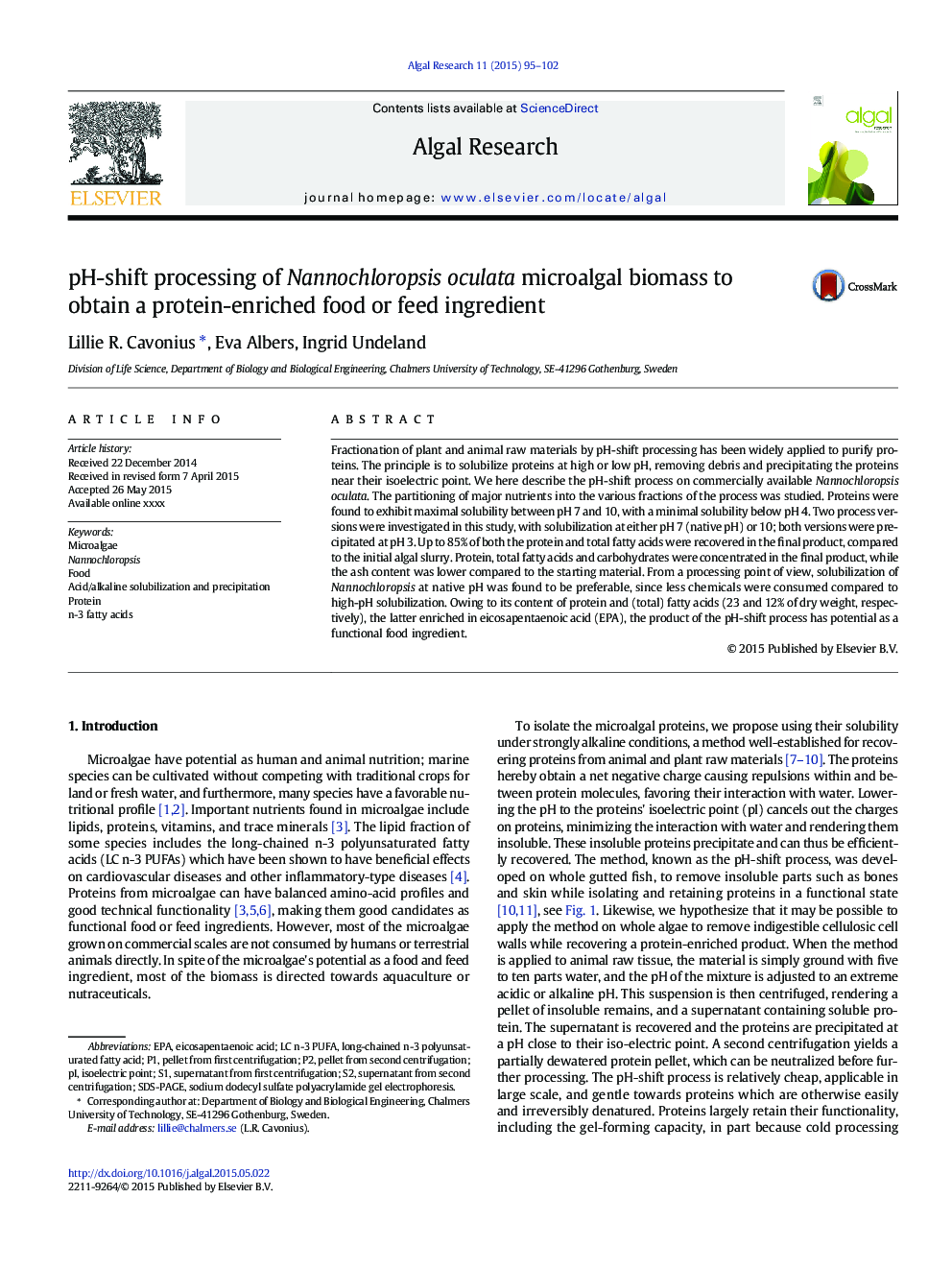| Article ID | Journal | Published Year | Pages | File Type |
|---|---|---|---|---|
| 8088047 | Algal Research | 2015 | 8 Pages |
Abstract
Fractionation of plant and animal raw materials by pH-shift processing has been widely applied to purify proteins. The principle is to solubilize proteins at high or low pH, removing debris and precipitating the proteins near their isoelectric point. We here describe the pH-shift process on commercially available Nannochloropsis oculata. The partitioning of major nutrients into the various fractions of the process was studied. Proteins were found to exhibit maximal solubility between pHÂ 7 and 10, with a minimal solubility below pHÂ 4. Two process versions were investigated in this study, with solubilization at either pHÂ 7 (native pH) or 10; both versions were precipitated at pHÂ 3. Up to 85% of both the protein and total fatty acids were recovered in the final product, compared to the initial algal slurry. Protein, total fatty acids and carbohydrates were concentrated in the final product, while the ash content was lower compared to the starting material. From a processing point of view, solubilization of Nannochloropsis at native pH was found to be preferable, since less chemicals were consumed compared to high-pH solubilization. Owing to its content of protein and (total) fatty acids (23 and 12% of dry weight, respectively), the latter enriched in eicosapentaenoic acid (EPA), the product of the pH-shift process has potential as a functional food ingredient.
Keywords
Related Topics
Physical Sciences and Engineering
Energy
Renewable Energy, Sustainability and the Environment
Authors
Lillie R. Cavonius, Eva Albers, Ingrid Undeland,
